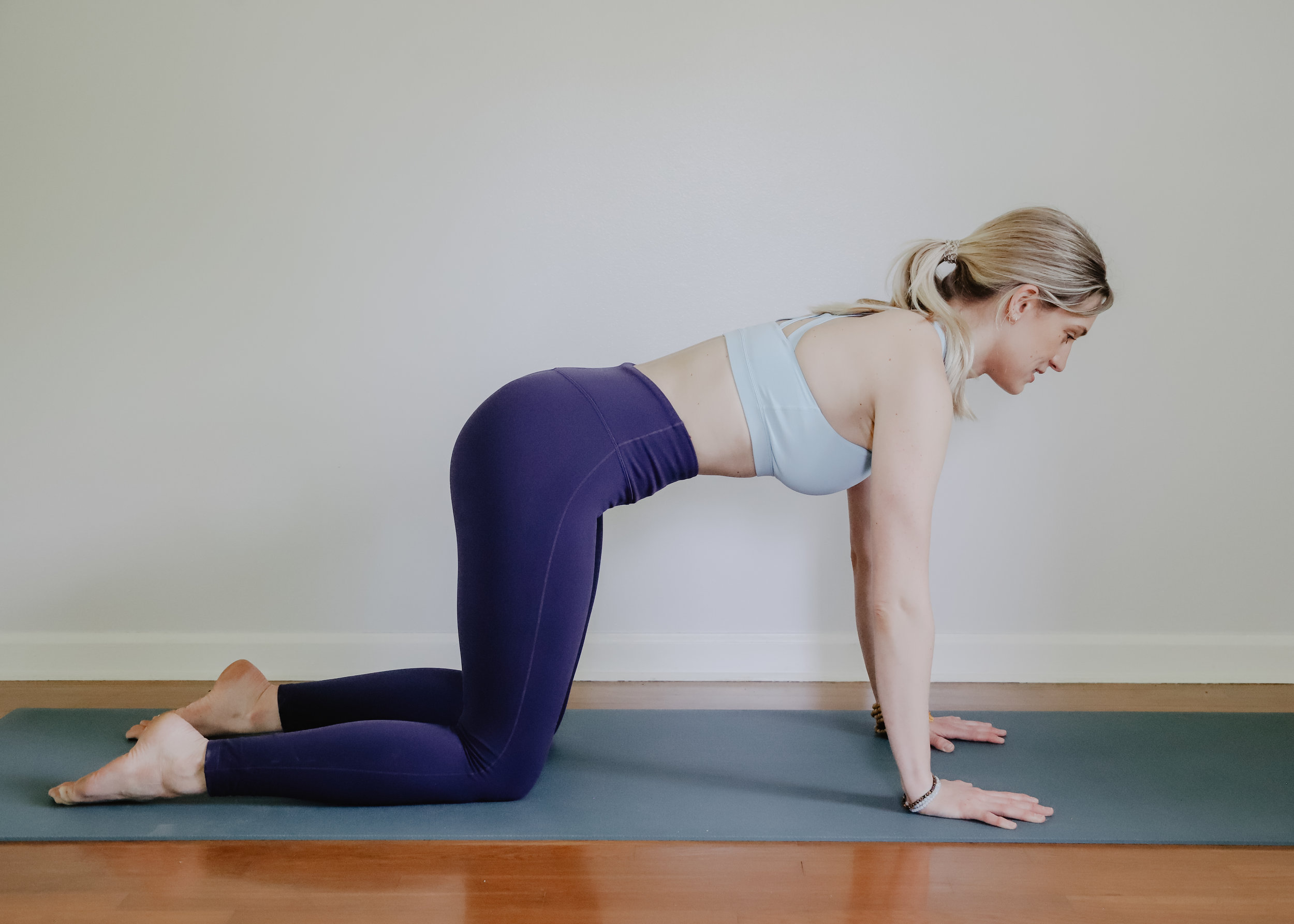Ah, good old downward facing dog pose.
Despite being one of the most foundational yoga poses, not to mention a pose that you’ll do multiple times in almost any yoga class, downward dog is not exactly an “easy” posture.
For a lot of people, especially those who are just starting out in yoga, downward dog can be particularly taxing on the arms, shoulders, and hamstrings.
The key to a stronger, more comfortable downward dog isn’t particularly sexy. Like most things in life, it just takes time. It takes time to build the upper body and core strength needed to hold this posture in stable alignment. It takes time for the hamstrings to open and lengthen, allowing your heels to sink a little bit closer to the floor. And finally, it takes time—maybe a LONG time—to develop the mental focus, stamina, and commitment to come back to this pose over and over and over again, even if you don’t love it.
In the meantime, there are a few things you can try out to help make your downward facing dog feel a little bit more inviting. If nothing else, know that every time you come into this pose, you’re building strength, lengthening your muscles, and cultivating inner commitment. That’s something to feel good about, for sure.
Everything You Need to Know About Down Dog
Sanskrit name: Adho Mukha Svanasana
Pose benefits: Energizes the body, strengthens arms and legs, builds stamina, mentally calming and stress-relieving
Precautions: Pregnancy, wrist and shoulder issues, high blood pressure (always consult your doctor before beginning a new exercise program)
1. How to Enter Downward Facing Dog
Start in a tabletop position
Make sure your hands are on the mat right below your shoulders
Spread your fingers as wide as they can go, really rooting down in the L and J shapes created with your pointer finger and thumb
Make sure your knees are on the mat right below your hip points, and that they’re spread about inner hip-distance apart (not too wide, not too narrow)
Then, walk your knees back a couple of inches so that they’re just a little bit behind your hips
Tuck your toes, press into your hands to activate your arms, lift your hips up and back towards the sky and voila, you’re in downward facing dog
2. How to Stabilize and Engage the Pose
Let’s start with your hands. Check back in and make sure you’re still spreading your fingers really wide and pressing into your knuckles
Keeping the arms really active, see if you can glide your shoulder blades down the back, allowing your neck to extend longer towards your mat
This helps with the external rotation of the arms—it might be subtle, but it’s the feeling that your elbow creases and biceps are spinning towards your ears
Make sure your gaze is back between your feet or your thighs—looking forward will strain your neck
Check in with your core—is it active? Pull your belly button in towards your spine and draw the middle ribs together like you’re zipping up through your midline
This will help you lift your sit bones a little bit higher towards the sky, maybe allowing your hamstrings to lengthen and your heels to sink a little bit closer to the floor
3. Bonus Tips & Tricks
When you first enter the pose, take a minute to pedal out your feet to warm up the legs and find your footing—no need to be completely stagnant
If your shoulders are feeling really tight, place your hands a little bit wider apart and angle your fingertips outward at a 45-degree angle
If your hamstrings are feeling really tight and your heels are really far away from the ground, bend your knees and come onto your tip toes (pictured above).
Send your sit bones as high as you can and allow your chest to melt back towards your the tops of your thighs.
From there, straighten your legs but try to keep the shape.
If your heels are still far away, no worries. That’s not a priority in the pose, it’s just an aspect of downward dog that may or may not happen someday.
Breathe! It will help with everything.
Give those alignment tips a try and let me know how it goes. Trust that in time, your downward facing dog will become more comfortable and familiar. And hey, you never know, you might eventually end up loving the pose :)
If you want more pose breakdowns like this one, check out my other tutorials below:


